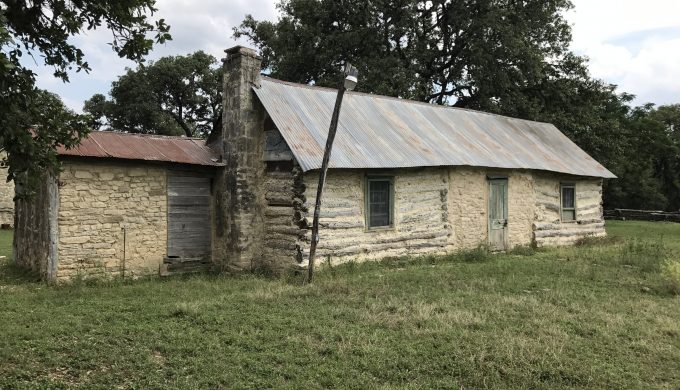Vernacular architecture was a way of life when immigrants began settling the Texas Hill Country. This style of building is not determined by a specific look or location, rather it is architecture that’s categorized by the usage of local materials and knowledge. Construction of these sites was and is typically conducted without a professional architect. Beautiful examples of vernacular architecture exist all along this region of Texas, and three great examples can be found in Leon Springs.
 Photo Courtesy of HomeTownInMyRearview
Photo Courtesy of HomeTownInMyRearview
History
Vernacular Architecture is All Around the Texas Hill Country

Photo by Honky Tonk Foodie
Constructed by German immigrant Max Aue in 1855, the Aue Stagecoach Inn is now a complex of three structures. Max Aue came to Texas in 1852, then built the 1 1⁄2 story saltbox limestone rubble house, which became a stop on the San Antonio-Boerne Stage Road. After marrying Emma Topperwin in early 1857, he built a cedar log cabin, then made additions as their family grew. In 1878, a two-story structure was added to the complex to serve as a hotel for travelers. When the San Antonio and Aransas Pass Railway connected the Alamo City directly to coast in 1886, the railroad spur was serendipitously 50 yards from the Aue Hotel. In 1968, this house was added to the San Antonio project of the Historic American Buildings Survey. It was then added to the National Register of Historic Places in 1979. Find it today located on Boerne Stage Road and I-10.

Photo by Honky Tonk Foodie
Just 750 yards away from the Aue Stagecoach Inn is the Plehwe Complex. These buildings were also used as a hotel and are a set of historic saltbox houses. Saltbox houses are two stories in the front and one story in the back, covered by a slanted roof. The original owners were Capt. Charles Felix George von Plehwe and his spouse Mina Sophie von Plehwe. The buildings are on 100 acres and were added to the National Register of Historic Places on December 15, 1983. They are now owned and maintained by George Strait.

Photo Courtesy of HomeTownInMyRearview
Further from I-10, at 26090 Toutant Beauregard Road, the Barrera property is home to several meticulously restored buildings from around 1860. Originally purchased in 1856, nine acres still remain of the original 171 acres homesteaded by William Heidemann, who immigrated from Prussia. The land remained in the family for 137 years until 1993, when Mrs. Jewell Heidemann sold the property to the Barrera family. The dog-trot log house is a three-room structure with six sash windows, situated to collect the best breezes. Beyond the house is the limestone barn, flanked by a wood frame addition, as well as other buildings.
This site was listed on the National Register of Historic Places in 2011. A gold medal Building Award was given to Mr. Barrera by the San Antonio Conservation Society in March 2016. Send an email to stop by to see his efforts for yourself. Do you know of an example of vernacular architecture in your area?

